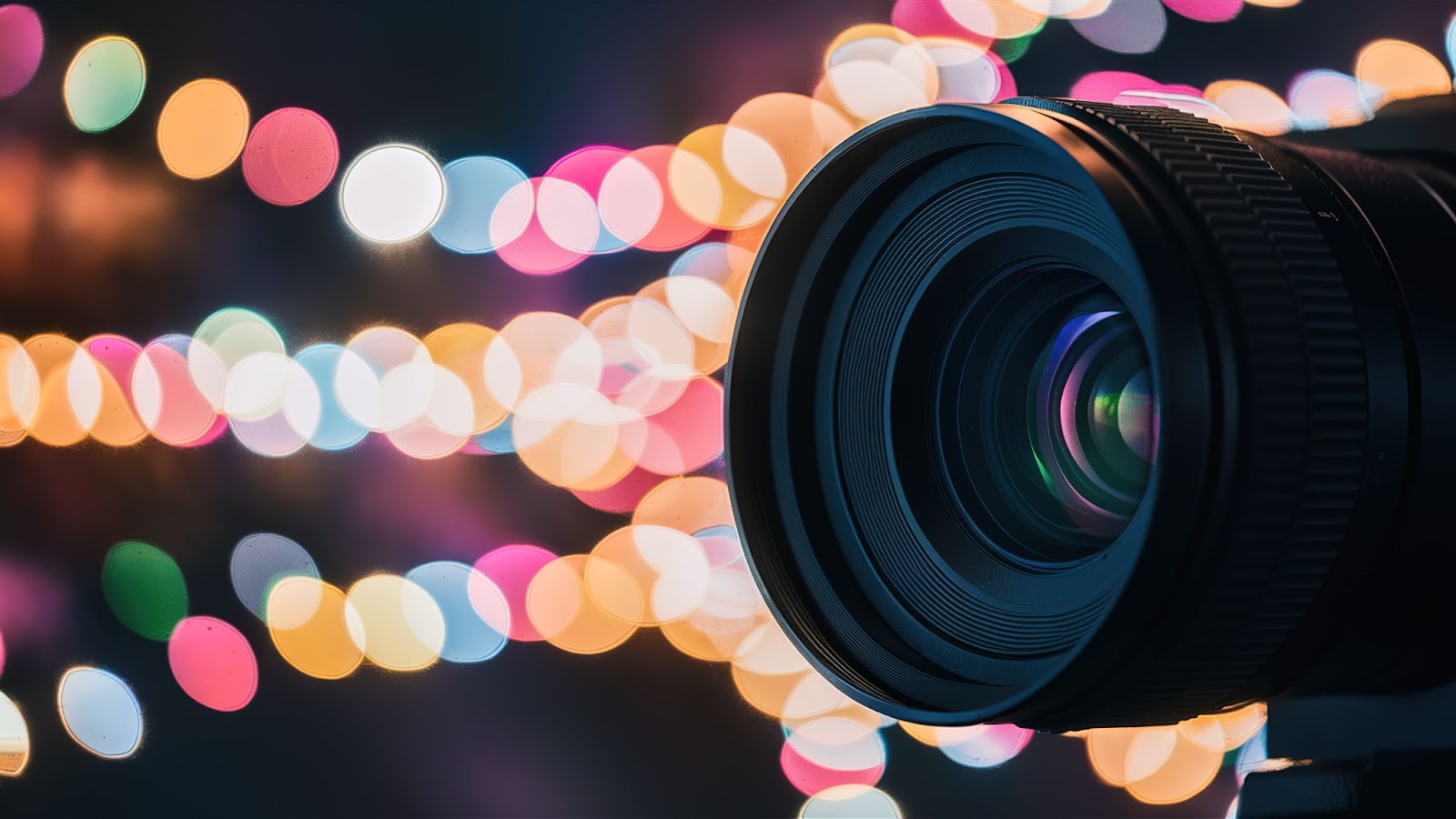Free stock photos for websites and commercial use are available from various platforms like Unsplash, Pexels, and Pixabay. These images can enhance your content without incurring costs.
High-quality visuals play a crucial role in engaging website visitors. Using free stock photos allows businesses and creators to save money while maintaining a professional appearance. Many platforms offer diverse collections of images tailored for different themes and industries. Users can easily find images that suit their specific needs, whether for blogs, social media, or marketing materials.
Understanding licensing agreements is essential, as some images may have restrictions. By sourcing the right visuals, you can improve the user experience and boost your site’s SEO performance. Explore these resources to elevate your content today.

Introduction To Free Stock Photos
Free stock photos are images that anyone can use without paying. They are perfect for websites and commercial use. Many people think these images are low quality or hard to find. In reality, free stock photos can enhance your content and save you money. This post will explore the world of free stock photos and their benefits.
Benefits Of Free Stock Photos
Using free stock photos brings many advantages. These images help make your content more attractive. They can also save you time and money. Here are some key benefits:
- Cost-effective: No need to spend money on images.
- Diverse options: A wide range of topics and styles are available.
- High quality: Many free photos are high-resolution.
- Easy to find: Numerous websites offer free stock images.
- No copyright issues: Most images come with clear usage rights.
Here’s a simple table showing popular sources for free stock photos:
| Website | Special Features |
|---|---|
| Unsplash | High-quality images, no attribution needed. |
| Pexels | Wide variety, user-friendly search. |
| Pixabay | Photos, illustrations, and videos available. |
| Freepik | Vectors and stock photos, some require attribution. |
These benefits make free stock photos an excellent choice for anyone creating online content.
Common Misconceptions
Many people have misconceptions about free stock photos. They often believe these images are low quality or unoriginal. Here are some common myths:
- Free means poor quality: Many free images are high-resolution and professional.
- All images require attribution: Some sites do not require giving credit.
- Limited usage rights: Most free images allow for commercial use.
- Hard to find unique images: Search engines can help you find rare photos.
Understanding these myths helps in choosing the right images. Free stock photos can be both unique and useful. They can elevate your projects without breaking the bank.
Popular Free Stock Photo Sites
Finding the right images for websites and commercial use can be a challenge. Free stock photos provide a solution. They offer beautiful images without any cost. Many websites host these images, making it easy to find what you need. Popular free stock photo sites provide a treasure trove of high-quality visuals. You can use these images for blogs, advertisements, or social media. Below, explore the top platforms and niche websites that offer free stock photos.
Top Platforms For High-quality Images
Several platforms stand out for their vast collections of high-quality images. They are user-friendly and cater to various needs. Here are some top platforms:
- Unsplash – A favorite for stunning, high-resolution images.
- Pexels – Offers a diverse range of photos and videos.
- Pixabay – Contains over 1.7 million free images and videos.
- Burst by Shopify – Great for entrepreneurs and business-related images.
These platforms are easy to navigate. Users can search by keywords or browse categories. Below is a comparison table of these platforms:
| Platform | Image Types | License |
|---|---|---|
| Unsplash | Photos | Free for commercial use |
| Pexels | Photos, Videos | Free for commercial use |
| Pixabay | Photos, Videos, Music | Free for commercial use |
| Burst | Photos | Free for commercial use |
These platforms provide a great start for anyone needing free stock photos. Their licenses allow for commercial use, making them ideal for various projects.
Niche Websites For Unique Photos
Niche websites offer unique photos that cater to specific needs. They provide images that you might not find on larger platforms. Here are some popular niche websites:
- Foodies feed – Perfect for food-related images.
- Death to Stock – Offers creative and artistic photos.
- Reshot – A community of photographers sharing unique images.
- ISO Republic – Focuses on both photos and videos for creatives.
These niche sites allow users to find specific themes. For instance, Foodiesfeed is ideal for food blogs. Each platform has its unique offerings:
| Website | Focus Area | Best For |
|---|---|---|
| Foodiesfeed | Food | Food bloggers |
| Death to Stock | Artistic | Creative projects |
| Reshot | Community-driven | Unique images |
| ISO Republic | Creative content | Photographers, videographers |
Niche websites add variety to your image selection. They help you find the perfect photo for your project. Explore these sites to discover unique images that stand out.
Licensing Explained
Free stock photos are a fantastic resource for websites and commercial use. They help enhance your content without breaking the bank. Licensing is crucial in understanding how you can use these images legally. Knowing the rules ensures you avoid issues and respect creators’ rights.
Understanding Creative Commons
Creative Commons (CC) is a type of licensing that allows creators to share their work easily. Here are the main types of Creative Commons licenses:
- CC BY: You can use the image, even for commercial purposes, as long as you credit the creator.
- CC BY-SA: Similar to CC BY, but your work must be shared under the same license.
- CC BY-ND: You can use the image, but you cannot alter it.
- CC BY-NC: You can use the image for non-commercial purposes only.
- CC BY-NC-SA: Non-commercial use with the same sharing rules.
- CC BY-NC-ND: The most restrictive license. You cannot alter or use it commercially.
| License Type | Commercial Use | Modification Allowed |
|---|---|---|
| CC BY | Yes | Yes |
| CC BY-SA | Yes | Yes |
| CC BY-ND | Yes | No |
| CC BY-NC | No | Yes |
| CC BY-NC-SA | No | Yes |
| CC BY-NC-ND | No | No |
Always check the specific license for each image. Respecting the terms helps support artists and their work.
Public Domain Images
Public domain images are free for anyone to use. These images are not protected by copyright. Here’s what you should know:
- No Restrictions: You can use, modify, and distribute these images.
- Attribution Not Required: You don’t have to credit the creator.
- Variety of Sources: Many websites offer public domain images.
Common sources for public domain images include:
- Pixabay
- Pexels
- Unsplash
- Wikimedia Commons
- Public Domain Review
While public domain images are free, it’s still wise to verify their status. Some images may appear in the public domain but still have restrictions.
Quality Vs. Quantity
Using free stock photos for websites and commercial use is essential for engaging visuals. The debate between quality and quantity is crucial. Quality images grab attention and convey professionalism. On the other hand, having many images can seem appealing. Balancing both is key. This section explores how to choose high-quality images and avoid clichés in stock photos.
Choosing High-resolution Images
High-resolution images are vital for any website. They ensure clarity and visual impact, especially on larger screens. Low-quality photos can make a site look unprofessional. Here are some tips for choosing the right images:
- Look for at least 300 DPI: This resolution is ideal for both print and web.
- Check the dimensions: Images should be at least 1920 pixels wide.
- Consider file format: PNG and JPEG are popular for high quality.
Using a table can help visualize the differences in resolutions:
| Image Quality | Recommended Usage | Minimum Resolution |
|---|---|---|
| High-Resolution | Websites, Print | 300 DPI |
| Medium-Resolution | Social Media | 72 DPI |
| Low-Resolution | Quick Previews | Below 72 DPI |
Invest time in finding high-resolution images. They make a big difference in your site’s appearance. Remember, quality images attract more visitors and boost engagement.
Avoiding Overused Stock Photos
Overused stock photos can make your website feel generic. They often lack originality and fail to connect with your audience. To stand out, consider these strategies:
- Search for unique sources: Use lesser-known stock photo sites.
- Customize images: Add text or graphics to make them your own.
- Use real photos: Consider hiring a photographer for genuine images.
Here’s a list of popular stock photo sites to explore:
- Pexels
- Unsplash
- Pixabay
- Burst
Choose photos that reflect your brand’s personality. Authentic images create trust and engagement. Avoid the common clichés to keep your content fresh and relatable.
Attribution Requirements
Free stock photos are a great resource for websites and commercial use. They help make your content visually appealing. Many of these images come with specific rules called attribution requirements. Understanding these rules is essential. It ensures you respect the rights of the image creators while enhancing your work.
When Attribution Is Necessary
Attribution is often necessary when using free stock photos. Many platforms require you to give credit to the image creator. Here are some common scenarios:
- Images from sites like Unsplash or Pixabay often need attribution.
- Creative Commons licenses usually require credit.
- Commercial use of images may have stricter rules.
Look out for the specific license attached to each image. This will tell you if attribution is required. Check the following table for common stock photo sites:
| Website | Attribution Required | Commercial Use Allowed |
|---|---|---|
| Unsplash | No | Yes |
| Pexels | No | Yes |
| Pixabay | No | Yes |
| Flickr (Creative Commons) | Yes | Varies |
Remember to always read the licensing terms for the image you want to use. This will help you avoid any legal issues later.
How To Properly Attribute Images
Proper attribution is crucial when using images that require it. Here’s how to do it correctly:
- Include the creator’s name.
- Provide the title of the image.
- Link back to the source.
Here’s a simple format to follow:
Image Title by Creator Name on Website
For example:
Sunset Over the Ocean by Jane Doe on Unsplash
Make sure your attribution is clear and visible. Place it near the image or in the credits section of your work. This shows respect for the creator’s work and helps others find the original image.
Failure to attribute can lead to legal troubles. Always double-check if the image requires credit. This simple step can save you a lot of hassle.
:max_bytes(150000):strip_icc()/001_top-sites-to-find-free-photos-3476732-ee74286a7b6a4447a47057e15d6df24f.jpg)
Editing Free Stock Photos
Free stock photos are a fantastic resource for websites and commercial use. They provide high-quality images without any cost. Editing these photos helps to match your brand’s style. It makes your content unique and engaging. Let’s explore how to edit free stock photos effectively.
Basic Editing Tips
Editing free stock photos can enhance their visual appeal. Here are some basic tips to help you get started:
- Crop the Image: Remove unwanted areas. Focus on the main subject.
- Adjust Brightness: Brighten or darken the photo to enhance its mood.
- Change Contrast: Increase contrast to make colors pop.
- Apply Filters: Use filters to create a specific look or feel.
These edits can make a significant difference. Here’s a simple table showing the effects of basic edits:
| Edit Type | Effect |
|---|---|
| Crop | Focuses attention on the subject |
| Brightness | Sets the photo’s mood |
| Contrast | Makes colors more vivid |
| Filters | Creates a unique style |
Using these tips can transform your images. Make sure to save copies of the originals. This way, you can always return to them if needed.
Tools For Customization
Many tools are available for editing free stock photos. Some are simple, while others offer advanced features. Here are popular tools you can use:
- Canva: Great for beginners. Offers templates and easy editing tools.
- GIMP: free software that provides advanced editing options.
- Pixlr: Online editor with many features. No downloads are needed.
- Adobe Spark: User-friendly. Perfect for quick edits.
Each tool has its strengths. Choose one that matches your needs. Here’s a comparison table:
| Tool | Best For | Cost |
|---|---|---|
| Canva | Beginners | Free/Paid |
| GIMP | Advanced Editing | Free |
| Pixlr | Quick Edits | Free |
| Adobe Spark | Social Media Graphics | Free/Paid |
Experiment with these tools. They can help you create stunning images tailored to your brand.
Trends In Stock Photography
Free stock photos are essential for websites and commercial use. They help businesses grab attention and tell their stories visually. Trends in stock photography evolve quickly. Understanding these trends keeps your content fresh and engaging. Let’s explore the latest styles and the impact of social media on stock photos.
Emerging Styles And Themes
Stock photography is not what it used to be. New styles and themes are shaping the industry. Here are some exciting trends to watch:
- Authenticity: Real people in everyday situations.
- Diversity: Images showcasing different cultures and backgrounds.
- Minimalism: Simple, clean images with plenty of white space.
- Nature and Sustainability: Focus on green living and natural beauty.
These emerging styles reflect current societal values. They resonate with audiences seeking genuine connections. Below is a table illustrating popular themes:
| Theme | Description |
|---|---|
| Wellness | Images that promote health and well-being. |
| Remote Work | Visuals showing home offices and flexible workspaces. |
| Travel | Pictures of unique destinations and cultural experiences. |
These styles help brands connect with their audience. They create a sense of belonging and understanding. Using trending themes can boost engagement and shareability.
Impact Of Social Media On Stock Photos
Social media has changed how we view stock photos. Platforms like Instagram and Pinterest influence trends. Users prefer authentic and relatable images. Stock photo websites respond to this demand.
- Realism: More candid shots instead of staged photos.
- Vertical Orientation: Images formatted for mobile viewing.
- Short Videos: Stock providers now offer video clips as well.
Social media affects the type of images people seek. Here are a few ways it has shaped stock photography:
- Increased demand for lifestyle images.
- Growth of user-generated content.
- Focus on niche markets and communities.
Visual storytelling is essential in today’s digital world. Brands use striking stock photos to capture attention quickly. Social media trends will continue to influence stock photography in the future.
Maximizing Your Use
Free stock photos can enhance your website and marketing efforts. Maximizing their use is key to grabbing attention. High-quality images help engage visitors. They make your content more appealing and relatable. Use them wisely to boost your online presence.
Integrating Photos Into Your Website
Integrating photos into your website is essential for a professional look. Great images can tell stories and convey messages. Here are some tips to effectively use photos:
- Choose Relevant Images: Select images that match your content.
- Optimize Image Size: Resize images to improve loading speed.
- Use Alt Text: Describe images with alt text for accessibility.
Consider the layout of your pages. Use images strategically to break up text and guide visitors. Here’s a simple table showing different types of images and their purposes:
| Image Type | Purpose |
|---|---|
| Hero Images | To create a strong first impression. |
| Infographics | To present complex information simply. |
| Product Images | To showcase items effectively. |
Remember to keep your audience in mind. Choose images that resonate with them. This connection makes your website more inviting and engaging.
Using Images For Marketing Purposes
Images play a vital role in marketing. They grab attention and convey messages quickly. Here are ways to use images effectively in your marketing:
- Create Eye-Catching Ads: Use bold images to attract clicks.
- Share on Social Media: Include images in posts for higher engagement.
- Design Email Campaigns: Use visuals to enhance your emails.
Consider the following tips for effective marketing images:
- Use high-resolution images for a professional look.
- Keep branding consistent across all images.
- Test different images to see which ones perform best.
Images can improve your click-through rates and conversions. They make your marketing messages clear and memorable. Always choose images that reflect your brand’s identity.

Conclusion
Finding free stock photos for websites and commercial use enhances your projects significantly. These resources provide high-quality images without breaking the bank. Always check the usage rights to ensure compliance. With the right visuals, your content will engage and attract more visitors.


